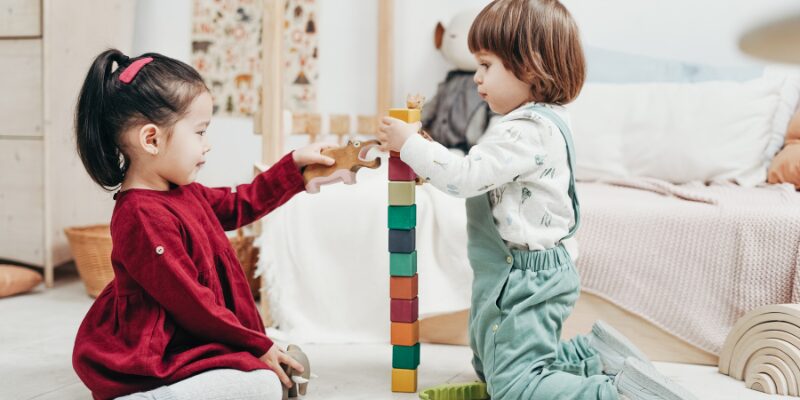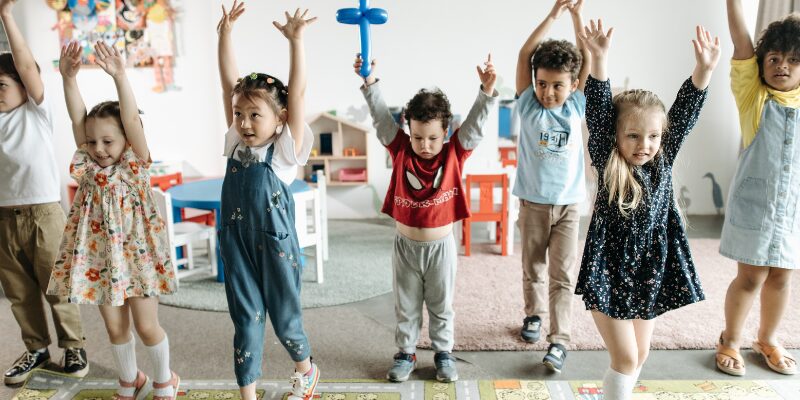
How to Build Resilience in Children: Nurturing Future Strength
- February 4, 2024
- Mental Wellness Tips
- 0 Comments
Most children undergo a series of developmental strides, and when parents celebrate their accomplishments, new challenges emerge on the horizon that may be beyond their current abilities.
Consequently, they may take a step or two backward, exhibit behaviors reminiscent of the past, or even lash out at their parents. This is normal!
This blog highlights the practical approaches you may already employ as a parent. It guides you in supporting your children in cultivating skills that contribute to their happiness and resilience.
You will explore ways to help them learn to manage stress, navigate challenges, and cope with issues related to peers and self-doubt. Let’s get started on this journey together.
Table of Contents
Why is Resilience?
Every parent dreams of raising children who live happy, charmed lives without physical pain, worries, or emotional distress. They hope their kids never encounter broken bones or lost ball games. Ideally, they would avoid smoking, drugs, and car accidents and delay having sex until marriage.
In an ideal world, children wouldn’t have to worry about peer pressure, bullying, parental conflicts or divorce, strangers, diseases, death, poverty, crime, terrorism, or war. Parents fantasize about protecting their children from all possible losses, heartaches, and dangers by wrapping them in a comforting quilt. However, the question arises – would this truly benefit them?
Even if we could shield children from all disappointments and stress, would they ever have the chance to experience the satisfaction of overcoming challenges and discovering their ability to cope with tough situations? Could they savor success or find joy and pleasure without facing some struggles, failures, or rejections?
If we desire our children to embrace the world entirely, with its pain and joy, our focus should be resilience. Resilience is the capacity to rise above difficult circumstances, enabling us to navigate this imperfect world with optimism and confidence, moving forward despite challenges.
Learn more: How to Talk to Your Child About Mental Health.
Understand about Resilience

Resilience is often described as the ability to recover from setbacks, the quality of bouncing back. It’s akin to buoyancy – just as our bodies naturally rise to the surface when pushed underwater, resilience is the capacity to rise to the top when faced with challenges.
This analogy serves as a helpful image as we explore resilience in this book, reflecting the desired outcome for our children: to rise back up when pushed under.
At its core, resilience is a mindset. Resilient individuals view challenges as opportunities for growth. While they don’t actively seek problems, they understand that overcoming challenges can strengthen them.
Instead of succumbing to self-doubt, catastrophic thinking, or a victim mentality (“Why me?”), resilient people actively seek solutions.
Recognizing that resilience is not uniform across all aspects of life is essential. A person may exhibit high resilience in one area but require more support in another.
Resilience is not about invulnerability, perfection, or complete avoidance of risk. Parents aim to instill resilience in their children so that they can navigate a complex and stressful world while also enjoying its abundant pleasures.
Contrary to perfectionism, which fears making mistakes and hinders taking chances, resilience encourages individuals to push their limits and learn from their mistakes.
This quality contributes significantly to success, as resilient people adapt and thrive in the face of challenges.
Resilience is not reserved for “perfect” individuals; instead, it’s a crucial factor in determining who will adapt and who will truly flourish.
Learn more: How a Childhood Trauma Test Can Help You Heal from Early Life Wounds.
How to Build Resilience in Children: Nurturing Future Strength

It’s beneficial to start by organizing numerous steps into a few distinct categories to foster resilience. Establishing a common language about resilience facilitates collaboration with spouses, neighbors, and communities. This shared understanding enhances our collective efforts in developing supportive strategies for children.
1. Confidence
Confidence is a genuine belief in one’s abilities and is built on competence. Children develop confidence by showcasing their competence in real-life situations.
It’s not merely about fostering warm and fuzzy self-esteem by labeling children as unique or precious.
Instead, true confidence emerges when children experience their competence, feel secure, and know they are protected.
This deep-seated security equips them with the confidence to navigate challenges.
Parents play a crucial role in nurturing confidence. By helping children identify their islands of competence and encouraging their growth, parents prepare them to gain the confidence needed to venture into new experiences and trust their abilities to make wise choices.
Consider the following questions when reflecting on your child’s confidence:
- Do I consistently see the best in my child, allowing him to see the best in himself?
- Do I clearly convey my expectation for his best qualities, such as fairness, integrity, persistence, and kindness, rather than focusing solely on achievements?
- Do I acknowledge and celebrate what he has done right or well?
- Do I treat him as a capable individual learning to navigate his world?
- Am I offering genuine and specific praise for his achievements, avoiding vague and inauthentic compliments?
- Do I recognize and commend him for positive actions, such as generosity, helpfulness, or taking initiative without being prompted?
- Am I encouraging him to reach further, demonstrating realistic but high expectations for his capabilities?
- Do I avoid unintentionally overloading him with tasks beyond his realistic capacity, causing him to stumble and lose confidence?
- When offering criticism or correction, do I focus solely on what he’s doing wrong, or do I remind him of his capability to do well?
- Am I mindful not to instill shame in my child during corrective moments?
2. Connection
Reflecting on these questions can guide parents in fostering an environment that builds true confidence in their children.
Connection is vital for children, and those with strong ties to family, friends, school, and community are more likely to develop a solid sense of security and values.
This sense of connection also acts as a deterrent, reducing the likelihood of seeking destructive alternatives.
While family is central in a child’s life, connections to civic, educational, religious, and athletic groups can broaden a young person’s sense of belonging to a broader world, fostering safety.
To assess your child’s level of connection, consider the following questions:
- Do we create a sense of physical safety and emotional security within our home?
- Does my child understand that I have an unwavering love for them?
- Am I aware that the challenges my child presents on their path toward independence are typical developmental phases, or do I take them so personally that it harms our relationship?
- Do I allow my child to express all emotions, or do I suppress unpleasant feelings? Is my child learning that seeking emotional support from others during difficult times is productive rather than shameful?
- Do we actively address conflicts within our family and work to resolve problems rather than letting them fester?
Reflecting on these questions helps parents gauge the strength of their child’s connections within the family and the broader world. Building a sense of security and belonging contributes significantly to a child’s well-being.
3. Competence
Competence is handling situations effectively, grounded in experience rather than a vague sense of “I can do this.” Children develop competence by acquiring skills that enable them to trust their judgments, make responsible choices, and confront challenging situations.
To fortify your child’s competence, consider the following questions:
- Do I help my child focus on her strengths and encourage her to build on them?
- Am I attentive to what she does well, or do I primarily focus on her mistakes?
- Am I clear and focused when addressing a mistake, or do I unintentionally convey the belief that she always messes up?
- Am I assisting her in recognizing her positive qualities and capabilities?
- Do I actively contribute to building the educational, social, and stress-reduction skills necessary for her competence in the real world?
- Am I communicating in a way that empowers my child to make her own decisions, or do I undermine her sense of competence by providing information in a manner she may not grasp? In other words, do I lecture her or facilitate her thinking?
Reflecting on these questions helps parents assess how they contribute to their child’s competence development. Encouraging a focus on strengths, acknowledging achievements, and fostering independent decision-making all play essential roles in building a child’s competence.
Final Thought
Resilience isn’t about making a child invulnerable. It’s crucial not to shield them from life’s challenges, as compassion and empathy often emerge from navigating difficult moments. Celebrate your child’s sensitivity during tough times, recognizing that their momentary sadness or anxiety may lead to developing qualities that align with the caring, kind person you want to raise.




